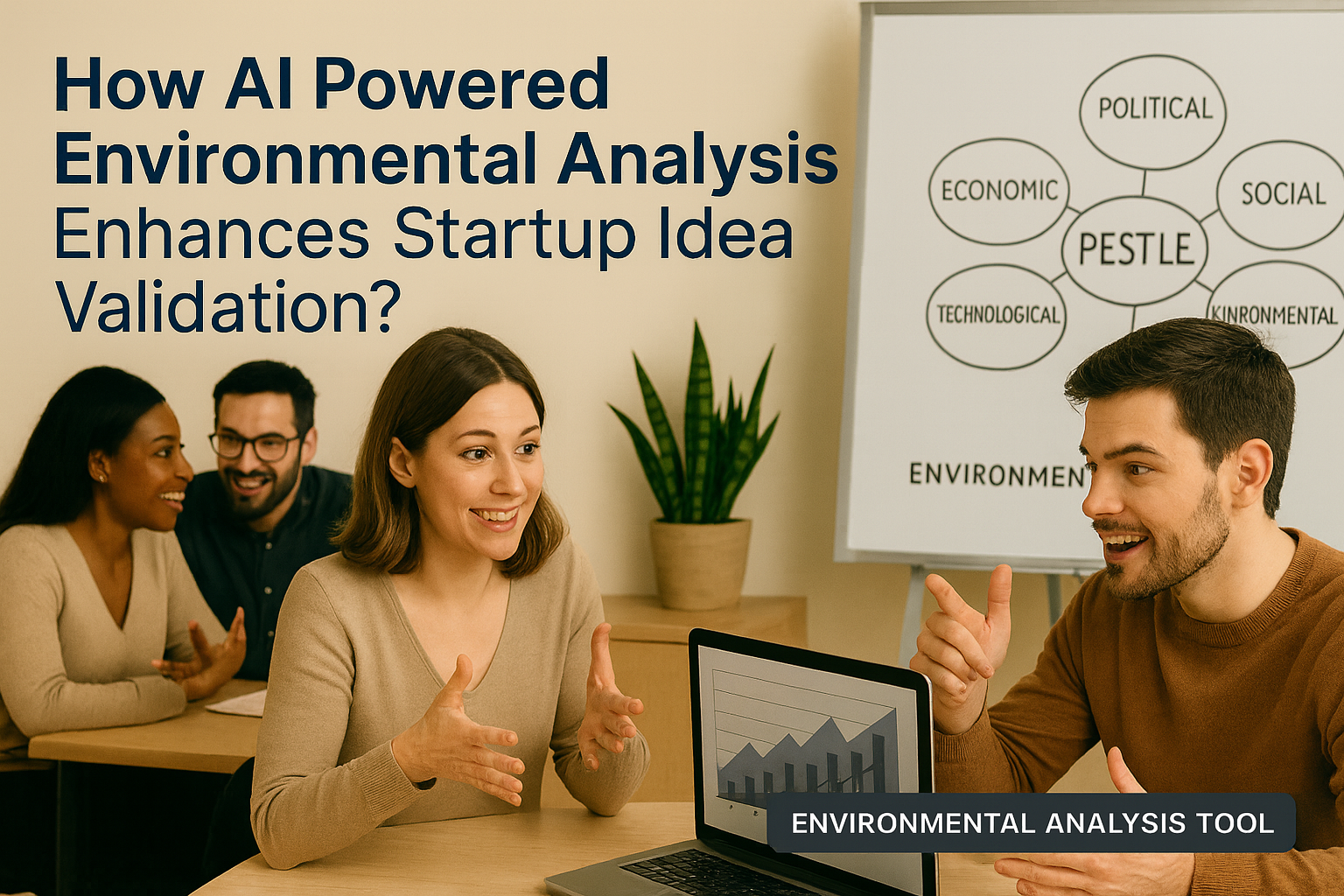How AI Powered Environmental Analysis Enhances Startup Idea Validation?
Before diving into product development or fundraising, it’s crucial to understand the broader environment your startup operates in. Environmental analysis reveals the macro-level forces—political, economic, social, technological, legal, and ecological—that can influence your strategy and validation process. By scanning these external factors early, you strengthen your ability to anticipate changes, seize emerging opportunities, and shape a resilient product-market fit.
What Is Environmental Analysis?
Environmental analysis is a structured assessment of external macro-environmental forces that could impact your startup—from government policies and economic trends to societal shifts and technological advancements. The most common framework for this is the PESTLE model, which stands for Political, Economic, Social, Technological, Legal, and Environmental factors.
Key elements of PESTLE include:
- Political/Legal: Regulatory frameworks, taxes, labor laws, intellectual property and policy developments.
- Economic: Factors like inflation, interest rates, currency shifts, and consumer purchasing power.
- Social: Demographics, cultural trends, lifestyle norms, and shifting attitudes.
- Technological: Emerging technologies, R&D activity, and digital infrastructure trends.
- Environmental: Climate change policies, sustainability mandates, resource scarcity, and waste regulation.
- Legal: Compliance obligations, data protection, and employment laws distinct from political factors.
How Does Environmental Analysis Support Validation?
Environmental analysis supports validation by anchoring your startup’s early decisions in reality:
- Situational Awareness: You spot market disruptions or upcoming policy shifts before they affect your go-to-market plan.
- Risk & Opportunity Identification: Analyze macro trends to identify external threats (e.g., regulatory changes) and enablers (e.g., new consumer norms).
- Strategic Positioning: Helps fine-tune your product positioning and business model to align with external trends—like sustainability regulations or technology adoption curves.
- Future-Proofing Validation: Ensures you're not validating in isolation, but within a context that may evolve rapidly. I
How Does AI Support Environmental Analysis?
AI tools can elevate environmental analysis by making it faster, smarter, and adaptive:
- Automated Trend Aggregation: AI can scrape news, policy updates, economic indicators, and social media to deliver synthesized insights about external shifts.
- Sentiment & Trend Detection: NLP models analyze public discourse—like forums or surveys—to gauge sentiment shifts or emerging concerns across macro categories.
- Signal Prioritization: Machine learning helps caregivers filter signal from noise and flag the most relevant external developments for your startup’s focus.
- Dynamic Scenario Modeling: AI can simulate how changes—like a new regulation or demographic shift—might impact demand, pricing, or competitor dynamics.
In combining traditional PESTLE frameworks with AI-powered data and synthesis, founders can validate assumptions with richer context, higher speed, and more foresight.
Environmental analysis is not just regular exercise—it’s essential validation groundwork for startups. By examining political, economic, social, technological, legal, and ecological forces, you gain a strategic lens to build within real-world constraints and drivers. When enhanced with AI, environmental analysis becomes dynamic and forward-thinking, helping you innovate in tune with evolving systems, not in isolation.






